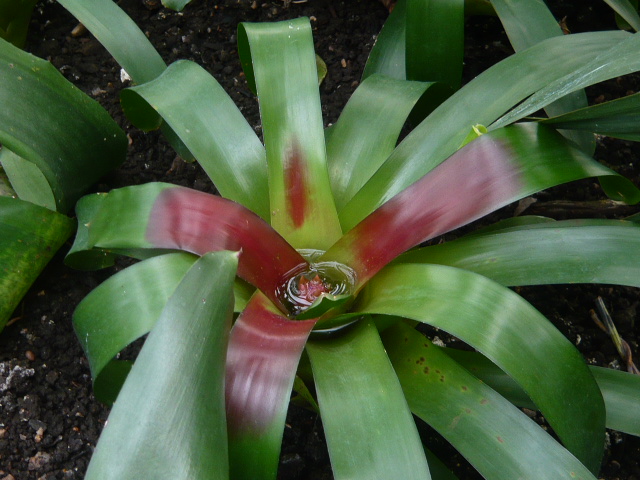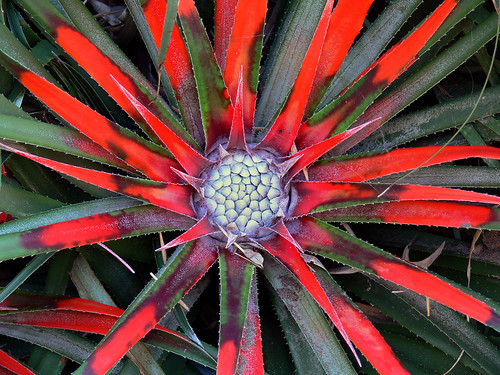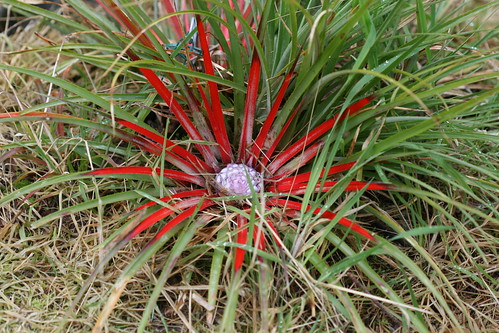
Bromeliad Fascicularia bicolour
Kew publish some photographs for public consumption and use under a creative commons license BY-NC-SA 2.0 including this image of Blooming fascicularia More pics on google

This photo of Fascicularia bicolor #1 by J.G. in S.F. is under CC BY-NC-ND 2.0
Gardeners Comments
Fascicularia bicolor is native to Chile as is the longer leaved Fascicularia pitcairnifolia.
Fascicularia bicolor has long thin leaves to about 24″ and when mature turns a brilliant red.
The blooms are formed by large tight clusters of blue flowers in the center.
Do not give too much fertiliser if you want them to flower. They may flower better when pot bound.
It offsets to form large clusters.
Fascicularia pitcairnifolia var. bicolor by Silversyrpher, CC BY 2.0 Taken Benmore Botanic Gardens, Argyle, Scotland. Sept.09

A less flamboyant Bromeliad
Bromeliads are members of the Pineapple family and grow in the tropical and sub-tropical forests of the Americas…. read more


2 thoughts on “Bromeliad Fascicularia bicolour”
what do you do when the blue central flower has died off?
Comments are closed.